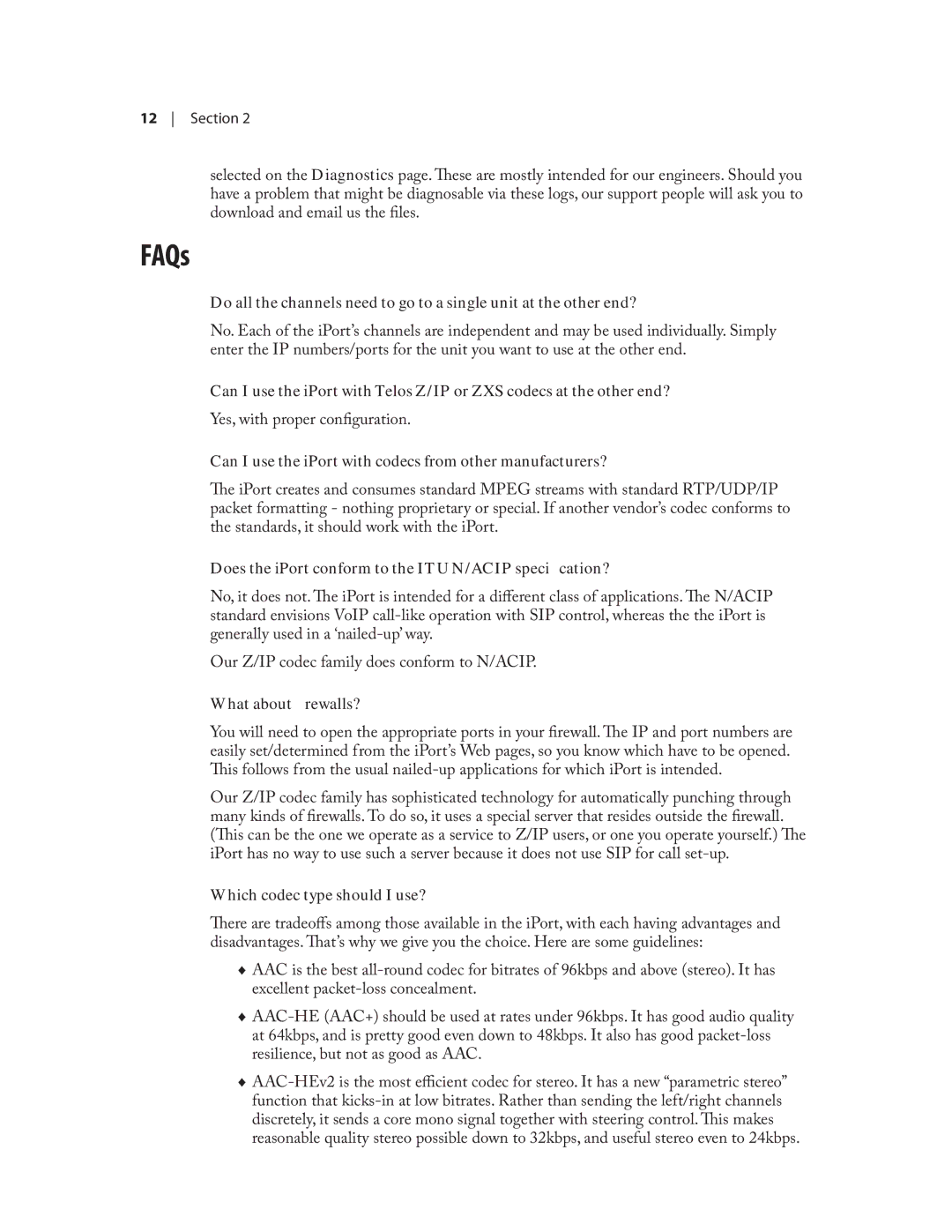12 Section 2
selected on the Diagnostics page. These are mostly intended for our engineers. Should you have a problem that might be diagnosable via these logs, our support people will ask you to download and email us the files.
FAQs
Do all the channels need to go to a single unit at the other end?
No. Each of the iPort’s channels are independent and may be used individually. Simply enter the IP numbers/ports for the unit you want to use at the other end.
Can I use the iPort with Telos Z/IP or ZXS codecs at the other end?
Yes, with proper configuration.
Can I use the iPort with codecs from other manufacturers?
The iPort creates and consumes standard MPEG streams with standard RTP/UDP/IP packet formatting - nothing proprietary or special. If another vendor’s codec conforms to the standards, it should work with the iPort.
Does the iPort conform to the ITU N/ACIP specification?
No, it does not. The iPort is intended for a different class of applications. The N/ACIP standard envisions VoIP
Our Z/IP codec family does conform to N/ACIP.
What about firewalls?
You will need to open the appropriate ports in your firewall. The IP and port numbers are easily set/determined from the iPort’s Web pages, so you know which have to be opened. This follows from the usual
Our Z/IP codec family has sophisticated technology for automatically punching through many kinds of firewalls. To do so, it uses a special server that resides outside the firewall. (This can be the one we operate as a service to Z/IP users, or one you operate yourself.) The iPort has no way to use such a server because it does not use SIP for call
Which codec type should I use?
There are tradeoffs among those available in the iPort, with each having advantages and disadvantages. That’s why we give you the choice. Here are some guidelines:
♦♦ AAC is the best
♦♦
♦♦
